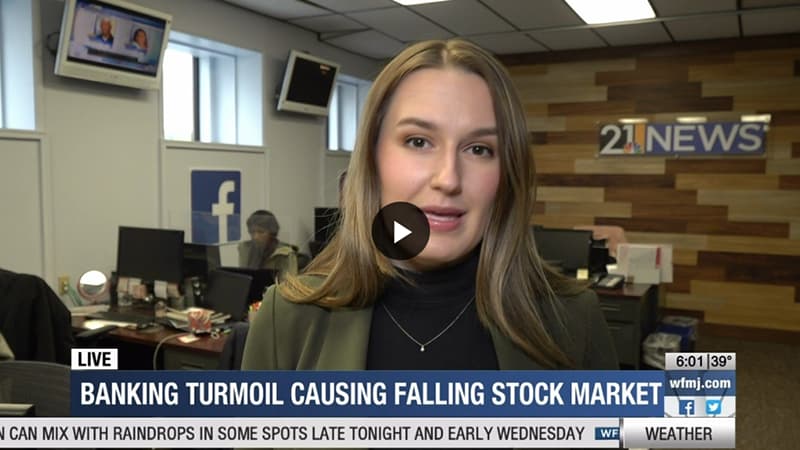Market Turmoil? ETF Investments Surge To New Highs

Table of Contents
The Safety Net of ETFs During Market Downturns
One primary reason for the surge in ETF investments during periods of market uncertainty is the inherent safety net they provide. This safety is largely attributed to two key factors: diversification and professional management.
Reduced Risk Through Diversification
ETFs offer a powerful tool for diversification, allowing investors to spread their risk across a range of asset classes, sectors, and geographies. This contrasts sharply with investing in individual stocks, where a single company's downturn can significantly impact your portfolio. By diversifying your holdings through ETFs, you mitigate the impact of market fluctuations within a single sector.
- Examples of Diversified ETFs: Broad market ETFs like the SPDR S&P 500 ETF Trust (SPY) and the Vanguard Total Stock Market ETF (VTI) offer exposure to hundreds or thousands of companies, reducing the risk associated with any single stock's performance. Sector-specific ETFs, while less diversified overall, can still offer diversification within a specific sector and often have lower correlation to the overall market than individual stocks within that sector.
- Performance During Downturns: Historically, diversified ETFs have shown greater resilience compared to individual stocks during periods of market downturn. While losses still occur, the impact is often lessened due to the spread of risk across multiple assets. Studies comparing ETF performance to individual stock performance during market corrections consistently show the advantage of diversification.
Professional Management and Lower Fees
Many ETFs benefit from professional portfolio management, with experienced fund managers actively selecting and rebalancing the underlying assets. This expertise can be invaluable, especially during times of market volatility. Furthermore, ETFs typically boast lower expense ratios compared to actively managed mutual funds, translating to significant long-term cost savings.
- Expense Ratio Comparison: While expense ratios vary across ETF types, they are generally lower than those of actively managed mutual funds. For example, compare the expense ratio of a broad-market index ETF to a similar actively managed mutual fund; the difference can be substantial over the long term.
- Long-Term Cost Savings: These seemingly small differences in expense ratios accumulate over time, potentially making a significant difference in your overall returns. The lower fees contribute directly to higher returns for the investor.
The Accessibility and Liquidity of ETF Trading
Beyond safety, the accessibility and liquidity of ETFs contribute significantly to their rising popularity. These factors make them an attractive investment option, especially for investors navigating market uncertainty.
Easy Access and Low Transaction Costs
ETFs are readily accessible through most brokerage accounts, simplifying the investment process. Furthermore, transaction costs are typically lower compared to other investment options, such as mutual funds, making them more cost-effective for frequent trading.
- Ease of Buying and Selling: The process of buying and selling ETFs is as simple as trading stocks, making them convenient for investors of all experience levels.
- Fractional Shares: Many brokerages allow investors to purchase fractional shares of ETFs, making them accessible even with limited capital. This feature lowers the barrier to entry for investors who may not have the capital to buy a full share of a higher-priced ETF.
Intraday Trading Flexibility
Unlike mutual funds, which are typically priced only once a day, ETFs trade like stocks throughout the trading day. This intraday trading flexibility allows investors to react quickly to market changes and adjust their positions as needed, providing a significant advantage during periods of heightened volatility.
- Trading Hours: ETFs trade during regular stock market hours, offering greater flexibility compared to investments with more limited trading windows.
- Flexibility Compared to Mutual Funds: This flexibility stands in stark contrast to mutual funds, which typically only allow trading at the end of the trading day. This can be a significant disadvantage during periods of sharp market movements.
ETF Investment Strategies for Market Volatility
The inherent characteristics of ETFs also lend themselves to specific strategies designed to navigate market volatility. These strategies can help investors mitigate risk and even capitalize on market fluctuations.
Defensive ETF Strategies
Defensive strategies utilize ETFs focused on low-volatility stocks or bonds to protect against market downturns. These ETFs tend to be less susceptible to significant price swings, offering relative stability during periods of uncertainty.
- Examples of Defensive ETFs: Low-volatility ETFs often track indices of less volatile stocks, providing a relative haven during market corrections. There are also bond ETFs that provide stability within a fixed-income portfolio. (Include relevant ticker symbols for specific examples.)
- Preserving Capital: The primary goal of these defensive strategies is capital preservation, aiming to minimize losses during market declines.
Opportunistic ETF Strategies
Market volatility can also create opportunities. Opportunistic strategies leverage market dips to buy ETFs at potentially lower prices, capitalizing on the downturn. Dollar-cost averaging is a particularly effective approach within this strategy.
- Dollar-Cost Averaging: Dollar-cost averaging involves investing a fixed amount of money at regular intervals, regardless of market fluctuations. This strategy reduces the risk of investing a lump sum at a market peak and helps to average out the purchase price over time.
- Buying the Dip: Opportunistic investors can use market dips to increase their ETF holdings, effectively buying low and potentially selling high when the market recovers.
Conclusion
In conclusion, the surge in ETF investments, even amidst market turmoil, highlights the safety, accessibility, and strategic advantages these investment vehicles offer. The ability to diversify risk, access professional management at lower costs, and trade with intraday flexibility are all key factors driving this growth. Whether employing defensive strategies to weather the storm or opportunistic strategies to capitalize on market dips, ETFs are proving to be a powerful tool for investors navigating uncertain market conditions. Don't let market volatility deter you. Explore the world of ETFs today and discover how you can navigate market turmoil and potentially achieve your investment goals. Research different ETF options to find the best fit for your portfolio and investment strategy.

Featured Posts
-
 Ajax Lead Cut To Six Points Refereeing Error Costs Az
May 28, 2025
Ajax Lead Cut To Six Points Refereeing Error Costs Az
May 28, 2025 -
 Les 5 Meilleurs Smartphones Pour Une Autonomie Toute La Journee
May 28, 2025
Les 5 Meilleurs Smartphones Pour Une Autonomie Toute La Journee
May 28, 2025 -
 Criticism Mounts Against Pvvs Coalition Plan To Freeze Rents
May 28, 2025
Criticism Mounts Against Pvvs Coalition Plan To Freeze Rents
May 28, 2025 -
 Art Institute Of Chicago Celebrating Picassos Historic 1939 Exhibition
May 28, 2025
Art Institute Of Chicago Celebrating Picassos Historic 1939 Exhibition
May 28, 2025 -
 Manchester United To Offload Another Forward Not In Amorims Plans
May 28, 2025
Manchester United To Offload Another Forward Not In Amorims Plans
May 28, 2025
